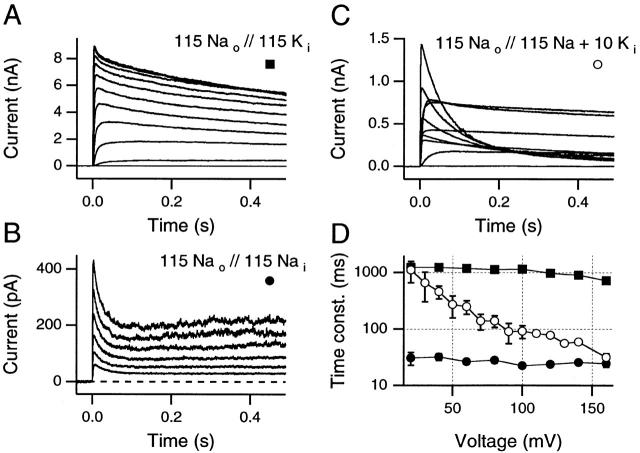Figure 1.
Slow inactivation rates can become steeply voltage sensitive when high Na+, low K+, internal solutions are used. (A) With 115 mM [Na+] externally and 115 mM [K+] internally, slow inactivation rate is essentially voltage insensitive for test potentials between +20 and +160 mV (traces shown: −20 to +160 mV, 20-mV steps, 5-s interpulse intervals). (B) Despite a marked increase in the rate of slow inactivation in symmetric Na+ solutions, the slow inactivation rate remains insensitive to the test potential (traces shown: +40 to +140 mV, 20-mV steps, 5-s interpulse intervals). (C) Slow inactivation is steeply voltage sensitive when 10 mM of K+ is added to the internal solution used in B (traces shown: −60 to +120 mV, 20-mV steps, 5-s interpulse intervals). (D) Time constants for all three conditions for test potentials from +20 to +160 mV. ▪, 115 Nao//115 Ki as in A (mean data from three to five patches). •, 115 Nao//115 Nai as in B (mean data from two to four patches). ○, 115 Nao//115 Nai + 10 Ki as in C (mean data from three patches, except at +160 mV, where n = 14 patches). Standard deviations are visible only when they exceed the size of the data symbol. All data are from inside-out patches.

